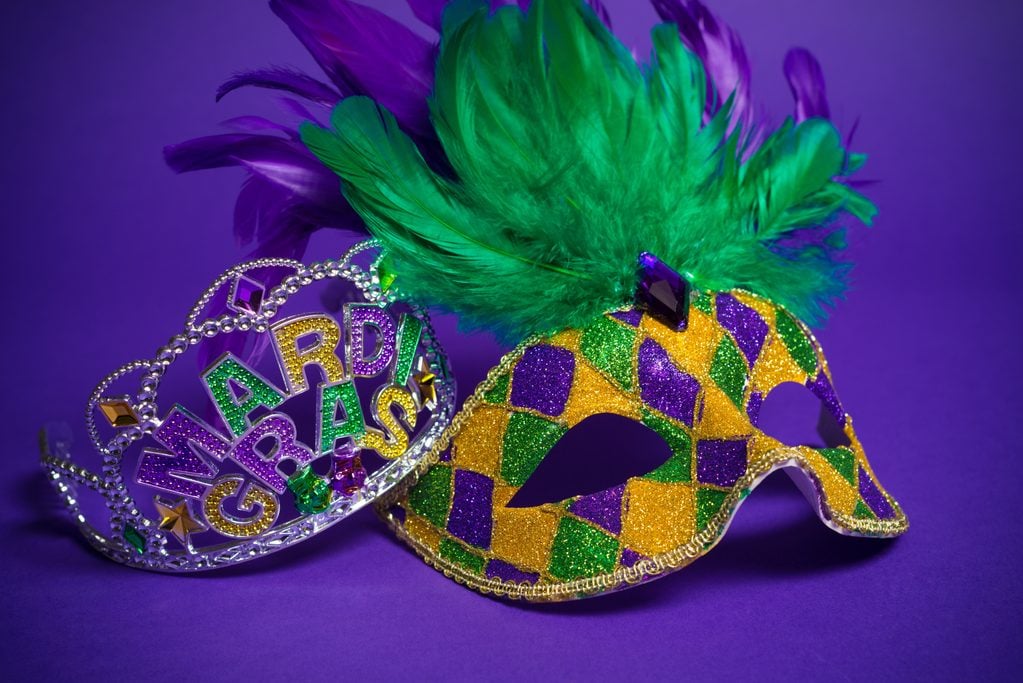Why Are the Mardi Gras Colors Purple, Gold, and Green?
Updated: Feb. 06, 2024

If you want to unearth the history of the origins of Mardi Gras colors are a good place to start.
Visit New Orleans for Mardi Gras and if you’re lucky, you’ll get tossed a strand of purple, green, or gold beads or maybe even one strand with all three and get to enjoy a slice of king cake drizzled with icing and sugar in those same colors. ( Learn more about the king cake). The official colors of Fat Tuesday made their debut in 1872 at the first parade of Rex, the king of Mardi Gras. Newspapers of the day ran proclamations from the king of the carnival decreeing that balconies should be draped in purple, gold and green. Ever since this triumvirate of colors has been associated with Mardi Gras, but why is the question.
Why three colors?
Before we get to the answer about why those three colors, in particular, let’s answer the easier question as to why Mardi Gras has three colors (versus two, four, or some other number). When local historian Errol Flynn Laborde researched the 125th anniversary of the Rex krewe (the organization that produces the parade), he came to the conclusion that the Rex founders believed “a king must have a kingdom and a kingdom must have a flag,” notes MardiGrasNewOrleans.com. A tricolor flag was the obvious choice as the United States, Great Britain, and France each have one.
Why these three colors
Now that we know why Mardi Gras is associated with three colors, let’s examine why purple, green and gold. While it was long thought that the colors were selected to honor Russian Grand Duke Alexei Alexandrovich Romanoff’s 1872 visit, Laborde has a different theory. According to traditional heraldry rules, a coat of arms needs both colors and metals; there are five choices of color: purple, green, red, blue, and black and the metal choices are limited to silver and gold. Purple has long been associated with royalty, making it an easy choice. Gold, likewise, was obvious as it’s more fitting for a king than silver. From there, Laborde found that the field was narrowed down to purple, gold, and green or purple, gold, and black. We may never know why green was picked as the third color.
What the colors mean
The hues weren’t given an official meaning until 1892 when the Rex parade had the theme “Symbolism of Colors.” That’s the year it was decided that purple stood for justice, green for faith, and gold for power.
School colors
There is an urban legend that the Mardi Gras colors are responsible for the choice of school colors for archrivals Louisiana State University and Tulane University. Allegedly, when LSU was deciding on its colors, the stores in New Orleans were stocked up with purple, green, and gold everything for the Mardi Gras season. They bought all the purple and gold items, leaving Tulane, home of the Green Wave, with only green items. Given that LSU was founded in 1860 and Tulane dates back to 1834, we’re not sure how much water this story holds. What we do know is that if you’re headed to NOLA for Carnival, you’ll want to wear your best purple, green, and gold—it’s a sure-fire way to get more beads and trinkets tossed your way.